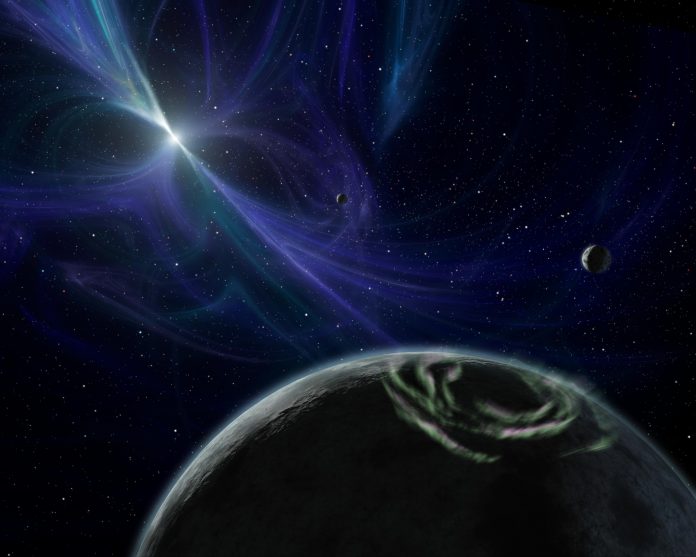A research team from the Royal Astronomical Society investigated the first exoplanet detection and revealed that a pulsar has the ability to host planets, a phenomenon that is considered exceptionally rare.
The processes of exoplanet formation
The processes that cause exoplanets around pulsars to form and survive are currently unknown. A survey of approximately 800 pulsars documented by the Jodrell Bank Observatory over the last 50 years has revealed that this first exoplanet detection system may be extraordinarily uncommon. To be exact, less than 0.5% of all known pulsars could host Earth-mass planets.
Pulsars are a type of neutron star, the densest stars in the Universe, born during powerful explosions at the end of a conventional star’s life. They are exceptionally stable, rapidly rotating, and have incredibly strong magnetic fields. Additionally, pulsars emit beams of bright radio emission from their magnetic poles that appear to pulse as the star rotates.
“[Pulsars] produce signals which sweep the Earth every time they rotate, similarly to a cosmic lighthouse,” explained Nițu. “These signals can then be picked up by radio telescopes and turned into a lot of amazing science.”
The novel discovery will be presented on 12 July 2022 at the National Astronomy Meeting (NAM 2022) by Iuliana Nițu, a PhD student at the University of Manchester.
The first-ever exoplanets discovered were orbiting a pulsar called PSR B1257+12
In 1992, the first-ever exoplanets were discovered orbiting a pulsar called PSR B1257+12. The planetary system is known to host at least three planets similar in mass to the rocky planets in our solar system. Since then, a handful of pulsars have been discovered to host planets. However, the extremely violent conditions surrounding the births and lives of pulsars make ‘ordinary’ planet formation improbable, and many of these detected planets are exotic objects – such as planets made mostly of diamond – unlike those we know in our solar system.
Astronomers at the University of Manchester recently performed the largest search for planets orbiting pulsars to date. The research team considered signals that indicate the presence of planetary companions with masses up to 100 times that of the Earth, and orbital time periods between 20 days and 17 years. Of the ten potential detections, the most promising is the system PSR J2007+3120 with the possibility of hosting at least two exoplanets, with masses a few times bigger than the Earth, and orbital periods of 1.9 and 3.6 years.
Thus, the results indicate no bias for particular planet masses or orbital periods in pulsar systems. However, the results yield information on the shape of these planets’ orbits. This means that in contrast to the near-circular orbits discovered in our solar system, these exoplanets would orbit their stars on highly elliptical paths. Therefore, this indicates that the formation process for pulsar-planet systems is vastly different from traditional star-planet systems.
“Pulsars are incredibly interesting and exotic objects. Exactly 30 years ago, the first extra-solar planets were discovered around a pulsar, however, we are yet to understand how these planets can form and survive in such extreme conditions. Finding out how common these are, and what they look like is a crucial step towards this,” concluded Nițu.









